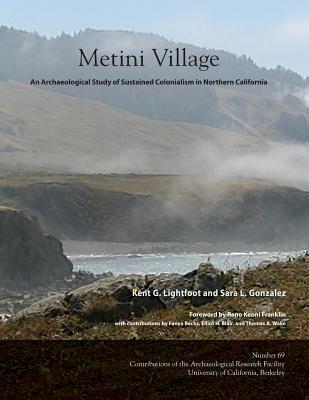Metini Village: An Archaeological Study of Sustained Colonialism in Northern California synthesizes the results of over two decades of collaborative archaeological research carried out by UC Berkeley, the Kashia Band of Pomo Indians, and California State Parks at Fort Ross, California. This volume makes the case for an archaeology of colonialism that bridges studies of early colonial encounters with analysis of settler colonial relations. Featuring analysis of archaeological data, tribal histories, and ethnographic and historic sources related to Metini Village and related sites across the Kashia homelands, the volume documents the strategies the Kashia people used to negotiate two colonial programs over five decades. This study highlights how despite the onslaught of settler colonists into their territories and in the face of colonial violence, the Kashia maintained their relations within a broader indigenous landscape. The volume outlines a methodology for undertaking the study of sustained colonialism employing an innovative low-impact approach designed specifically to produce the least amount of disturbance to ancestral archaeological remains while obtaining substantial knowledge about Metini Village and other settlements under investigation. The volume includes 158 pages of text, 76 figures, 16 tables, and 13 appendices.

Metini Village: An Archaeological Study of Sustained Colonialism in Northern California
Metini Village: An Archaeological Study of Sustained Colonialism in Northern California synthesizes the results of over two decades of collaborative archaeological research carried out by UC Berkeley, the Kashia Band of Pomo Indians, and California State Parks at Fort Ross, California. This volume makes the case for an archaeology of colonialism that bridges studies of early colonial encounters with analysis of settler colonial relations. Featuring analysis of archaeological data, tribal histories, and ethnographic and historic sources related to Metini Village and related sites across the Kashia homelands, the volume documents the strategies the Kashia people used to negotiate two colonial programs over five decades. This study highlights how despite the onslaught of settler colonists into their territories and in the face of colonial violence, the Kashia maintained their relations within a broader indigenous landscape. The volume outlines a methodology for undertaking the study of sustained colonialism employing an innovative low-impact approach designed specifically to produce the least amount of disturbance to ancestral archaeological remains while obtaining substantial knowledge about Metini Village and other settlements under investigation. The volume includes 158 pages of text, 76 figures, 16 tables, and 13 appendices.